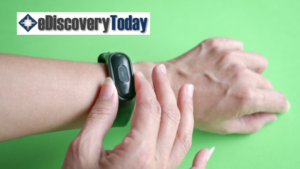
Last week, a true crime case that I’ve been covering for five years reached its conclusion (appeals aside) and I also just watched a TV show about another true crime case. The common link between the two cases? Fitbit data was critical in identifying the suspect. Here are those cases and two others, one of which is a completely different type of case that illustrates how Fitbits and other wearables don’t just apply to criminal cases.
Richard Dabate Case: Jurors in Connecticut convicted Richard Dabate last Tuesday of murdering his wife just before Christmas in 2015. Dabate had told police a masked man shot his wife, Connie Dabate, and tied him up before he burned the intruder with a torch at the couple’s Ellington home on Dec. 23, 2015. But prosecutors said that Dabate killed the victim after their marriage began to fall apart and his mistress became pregnant with his daughter.
As part of the evidence, prosecutors presented the slain woman’s Fitbit data to show she was moving around when her husband claimed she was dead.
Doug Austin, eDiscovery Today
As part of the evidence, prosecutors presented the slain woman’s Fitbit data to show she was moving around when her husband claimed she was dead. That was part of the evidence that undermined Dabate’s claim – he also sent an email to his supervisor saying he was going home to check on his house because an alarm went off, but the IP address associated with the email was from his own house, so he was already there when he sent the email.
This is the case I originally covered five years ago and updated again in March when it was finally going to trial after being delayed for two years because of the coronavirus pandemic.
Tony Aiello Case: This was a case I had heard about but was not fully aware of the details until I watched a show about the case on Investigative Discovery, called Caught in the Net. It was also covered back in 2019 by Wired. In this case, Karen Navarra was found a few days after she was killed. One of the details that law enforcement discovered when they processed the scene was that Navarro was wearing a Fitbit on her left wrist, so they submitted a warrant to extract the data. On Saturday, September 8, five days before she was found, Karen’s heart rate had spiked and then plummeted. By 3:28 that afternoon, the Fitbit wasn’t registering a heartbeat at all.
By 3:28 that afternoon, the Fitbit wasn’t registering a heartbeat at all.
Doug Austin, eDiscovery Today
With that information to pinpoint time of death, police also collected video from a neighbor’s Ring surveillance camera that pointed in the direction of Karen’s house. The footage showed that before and after 3:28 pm, a gray car was parked in her driveway, which was identified as the car belonging to Karen’s 90(!) year-old stepdad, Tony Aiello. Additional evidence led to his arrest and eventual conviction.
Doug Detrie Case: That reminded me of another case involving Fitbit data as evidence that I had seen on 48 Hours back in 2018 where a woman named Nicole Vander Heyden was found dead in a field. Detrie, her boyfriend, was interviewed by sheriff’s deputies and quickly became the prime suspect when blood was found on the floor of their garage and in Vander Heyden’s car, which led to his arrest.
Detrie was wearing a Fitbit device when he was interviewed by law enforcement and when he was arrested. He was also wearing it the night Vander Heyden died (when he said he was at home asleep), so law enforcement obtained the data from the Fitbit. However, the Fitbit showed that Detrie was telling the truth about his movements that night – asleep, except for a few footsteps to go to the bathroom. When it was determined that the blood found wasn’t Vander Heyden’s, he was cleared as a suspect and released – in large part due to his Fitbit activity. DNA eventually led to the actual killer, with GPS data from his cell phone helping to confirm his involvement in the crime.
Bartis, et al. v. Biomet, Inc., et al.: Fitbit data isn’t just potentially relevant in criminal cases. It can also be relevant in civil cases too. In this case which I covered on eDiscovery Today and we discussed on an EDRM case law webinar last year, the plaintiffs alleged that they suffered substantial injuries from the implantation of an artificial hip manufactured and marketed by Defendants, including Plaintiff Guan Hollins. In response to an interrogatory by the defendants, Hollins admitted that he consistently wore a Fitbit which tracks his number of steps, heart rate, and sleep.
The defendants requested production of all data from the Fitbit and any other wearable device or other fitness tracker used by Hollins. While Hollins objected to the request as burdensome and expressed privacy concerns (among other objections), the defendants argued that the ESI sought was directly relevant to causation and damages because Hollins’ “claims of permanent injury are central to this lawsuit” and if Hollins “were walking or running miles every day, the impact on the validity of his claim would be crucial”. Missouri District Judge John A. Ross granted in part the defendants’ Motion to Compel plaintiff’s Fitbit data, ordering Hollins to produce step data, but not other data (e.g., heart rate, sleep records) that wasn’t relevant and raised privacy concerns.
Missouri District Judge John A. Ross granted in part the defendants’ Motion to Compel plaintiff’s Fitbit data, ordering Hollins to produce step data, but not other data (e.g., heart rate, sleep records) that wasn’t relevant and raised privacy concerns.
Doug Austin, eDiscovery Today
Wearables like Fitbits and Apple Watches have become very popular today, the data from them has inevitably become routinely discoverable in criminal cases, and we’re starting to see them in civil cases too. Expect to see more stories about evidence from them here and on eDiscovery Today!
Experience more of Doug Austin’s great work at the eDiscovery Today blog here.
Follow Doug Austin on JD Supra here.
Follow EDRM on JD Supra here.


